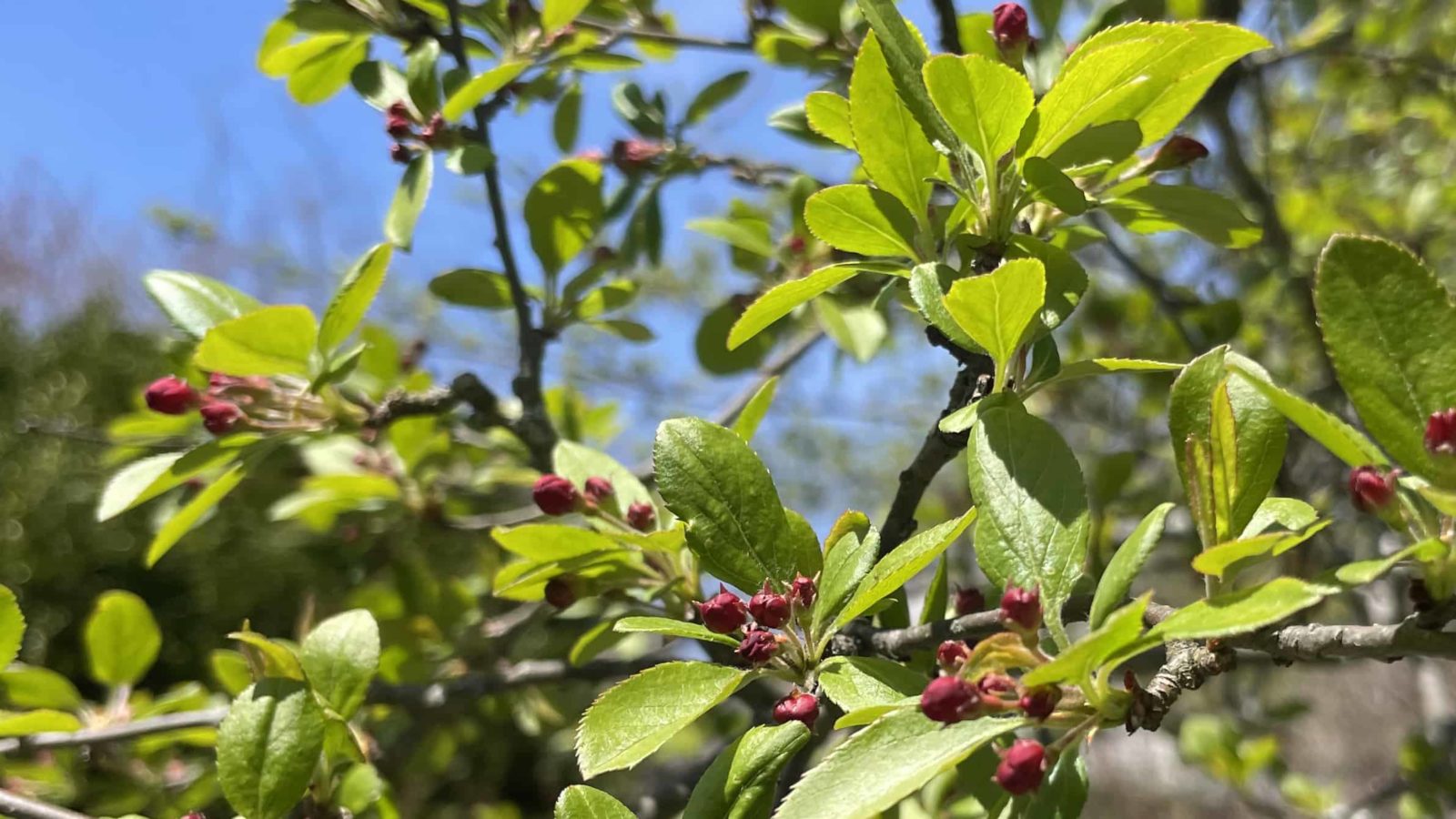This is the transforming time, every year. We come to a day or two in May when every bare budding twig seems to open all at once. The maples are suddenly green, and the woods have dancing light and leaf shadows again. The crab apples and cherries are in full bloom, and the air that has been clear and cold and still is moving.
Now we have a few mild nights together, and I hear the earth is getting warm enough for seedlings. Plant nurseries and farmers markets are opening. Last weekend, my dad gave me a pot of wood phlox dug from my grandmother’s garden.
That’s how I’ve always learned what I know about what grows here — walking in the woods with my mom as she shows me the trailing arbutus year after year, and coming home to help plant the peas. In some ways, getting to know what grows around my house can feel as wide as a mountain ridge, and in other’s it’s as daily as stopping at the coffee shop and running into a neighbor.
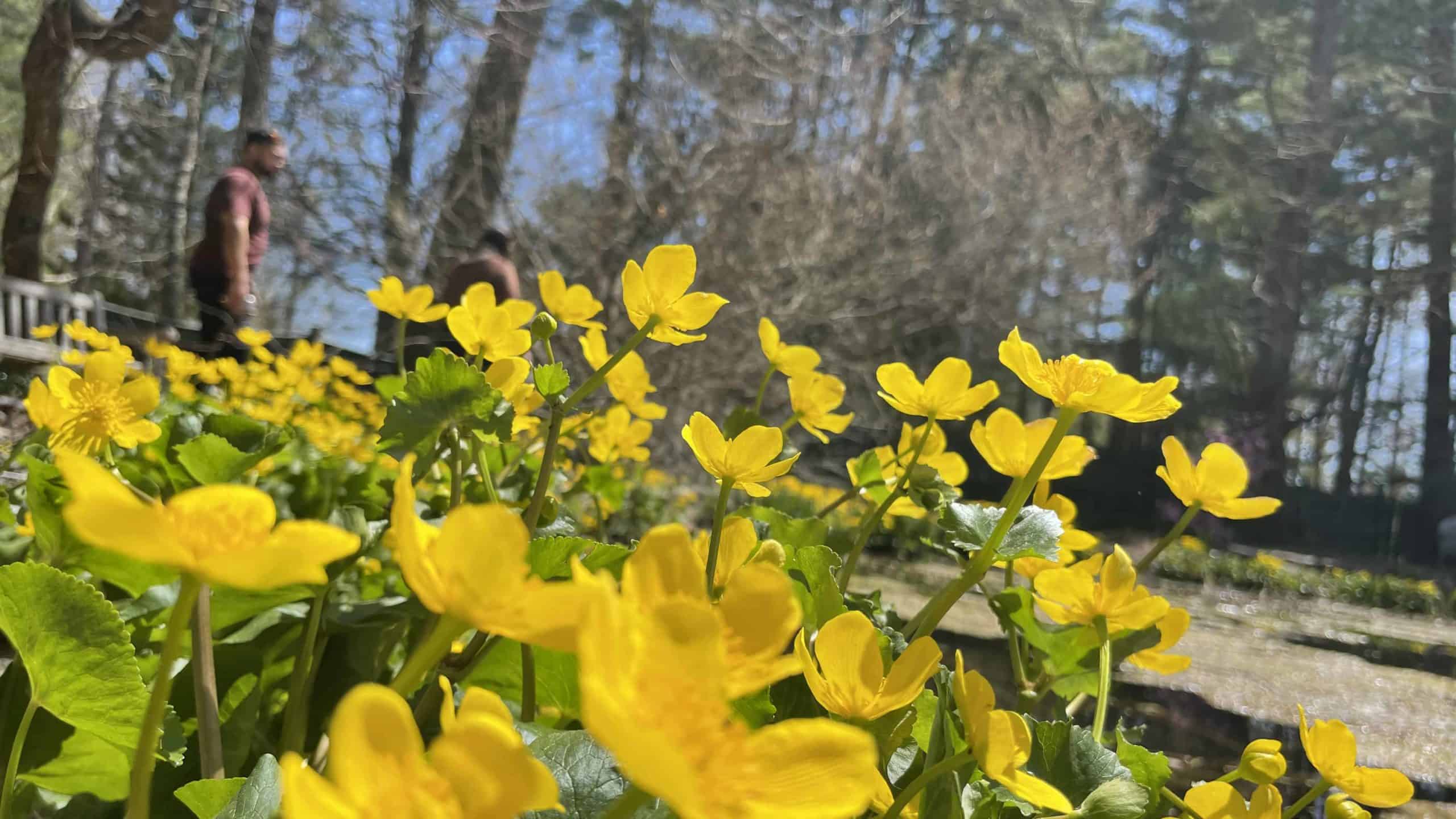
Marsh marigolds bloom vividly by the pond at the Berkshire Botanical Garden in May.
Is it like that for you? If you have earth to plant, even a few feet of flower bed or a window sill, are you thinking about how you want to be with them? Do you want to get your hands muddy and feel the ground, or stretch out on a warm evening and listen to the thrushes somewhere in the pine trees?
A few months back, when gardens were a glimmer of plans in the early dark, I was sitting with a friend on the rug by the wood stove, and she asked me, what if we thought about what we want to feel in a garden — would it move us in new ways? What would it feel like to make a garden for sound, or for scent? Her questions stay with me, tugging me to play with the world.
I’ve only had the chance to think about gardens in the last few years, in my own house. For a long time I had maybe a rented flower bed (without a hose) and a few spare hours in the flood of summer stories. But now I have some land to care for, to and I find myself thinking about how I want to live with all the living ecosystems around me.
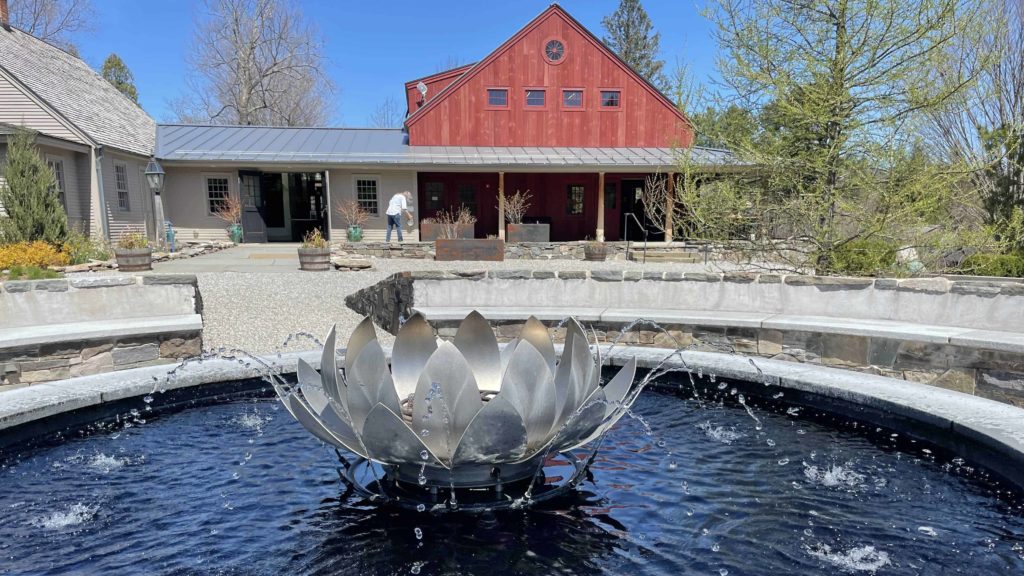
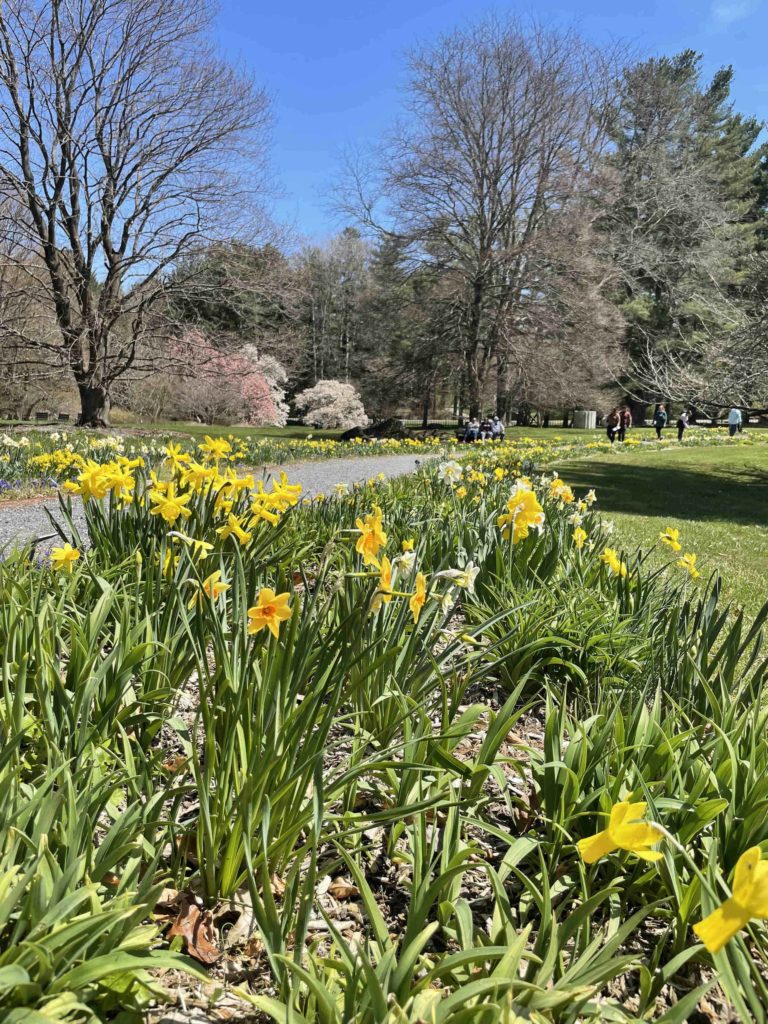
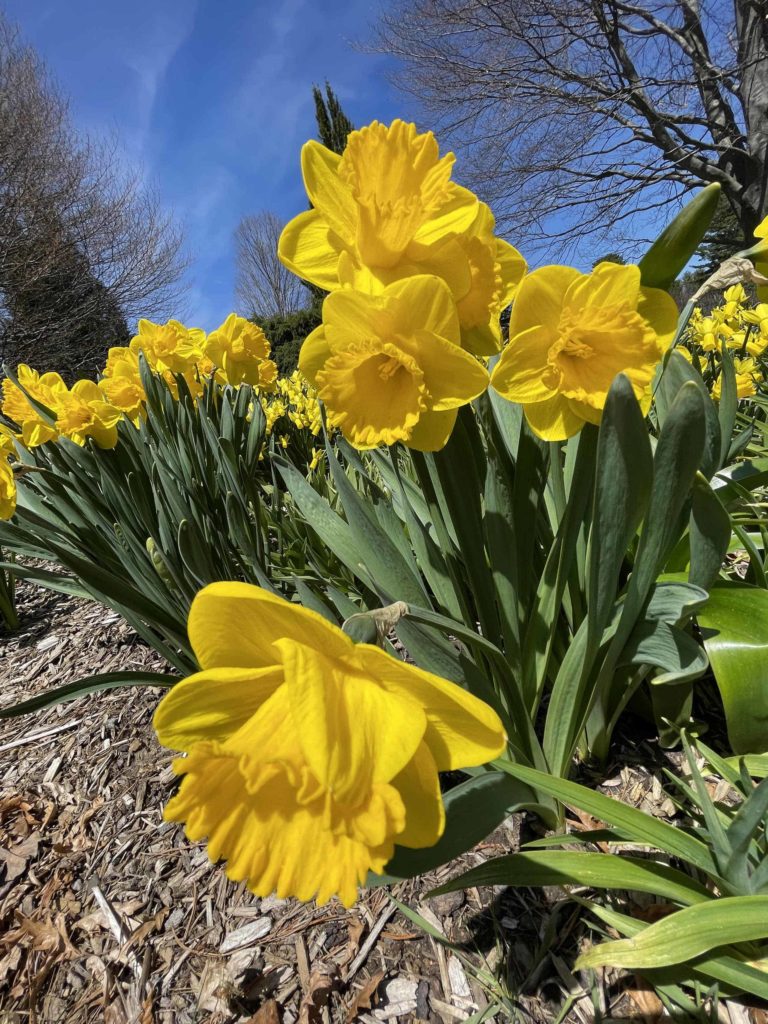


I want to care for the earth in my dooryard, and the trees — the old black walnuts, the white pines, the alder thicket — and the wildflowers, and the birds. Some of my small back yard is fairly wet, and I love it that way. Think of the wild irises and the cardinal flower and the swamp milkweed that could grow here, if only I can invite them in …
And I’ve been trying to. This is gradual for me. I’ll find a few pollinator-friendly seedlings here and there, a handful of milkweed pods in the fall. Wild Soul River has some seed packets on their community shelves, and I’ve come home today with salvia, thinking of the shades of deep purple in the gardens at Caretaker farm.
I’m trying to learn to care better for what I have, and I’m learning how I want to plant from conversations along the way.
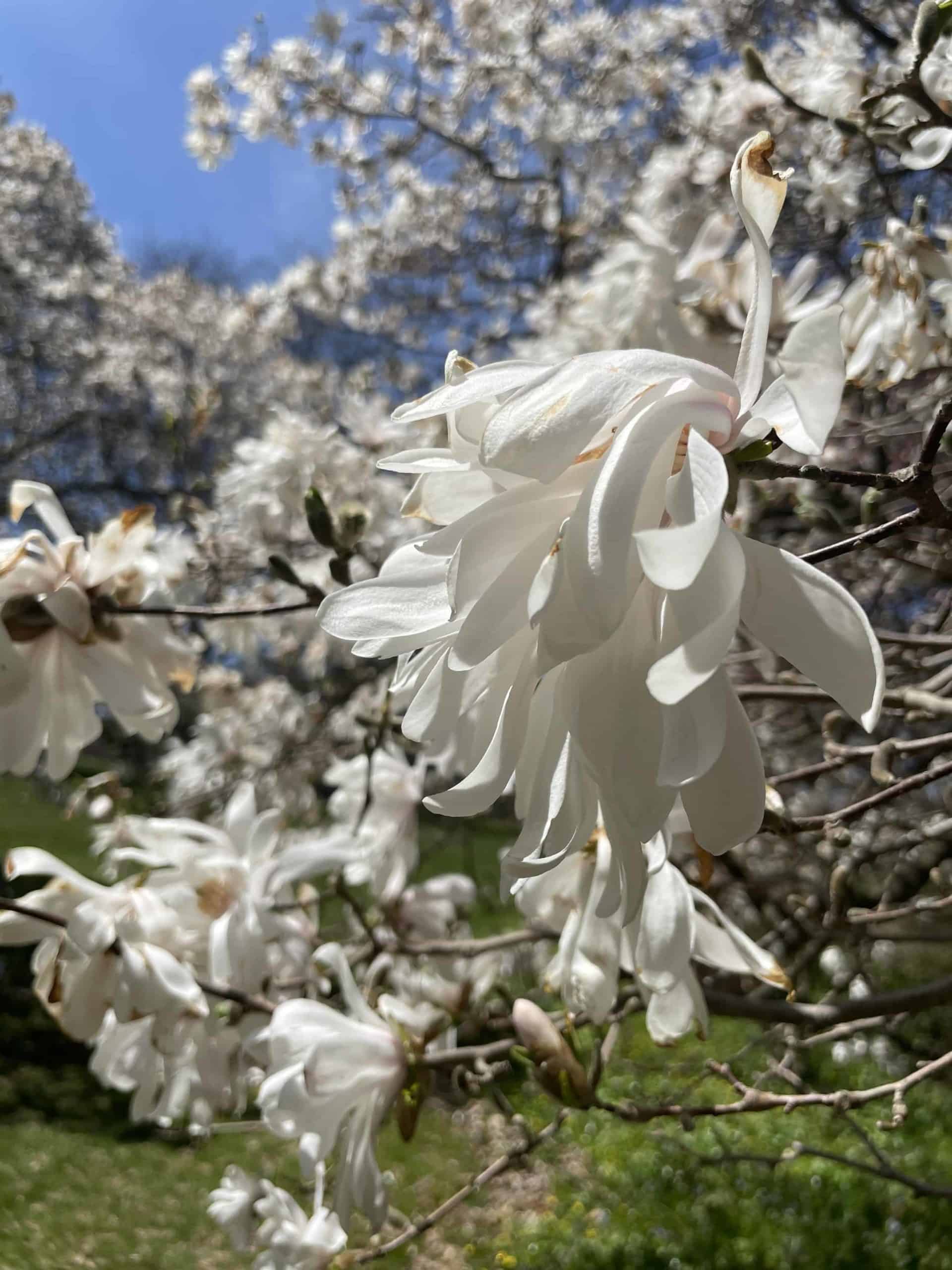
Magnolias bloom at the Berkshire Botanical Garden in May.
A year ago, Amy Pulley, founder of Wing and a Prayer plant nursery in Cummington, started me thinking about how complex a system pollinators really need. I came to her wanting to find some native plants and encourage butterflies … and she told me even one kind of butterfly will need different kinds of plants.
Caterpillars may eat one kind of leaf, and the butterflies they become may drink nectar from another. Bees and others may need plants to live in as well as to drink from, and they may need nectar and pollen both. So I’ll take all this one plant at a time, and I’ll keep slowly, gently trying to meet new ones.
Robin Wall Kimmerer put it into words for me, when I came back to Braiding Sweetgrass this spring. She tells a stoy of coming to college with a long and familiar knowledge of plants and talking with a professor who asked her why she wanted to study botany. She told him she wanted to know why goldenrod and asters look beautiful together.
That long-ago professor dismissed the question, and her with it — though today, as a botanist and a professor herself, she knows the answer, and she knows its importance to pollination. In Western scientific terms, those complimentary colors look brighter together. But the question has a larger meaning for her now.
“The question of goldenrod and asters was of course just emblematic of what I really wanted to know,” she says. “It was an architecture of relationships, of connections that I yearned to understand. I wanted to see the shimmering threads that held it all together.”
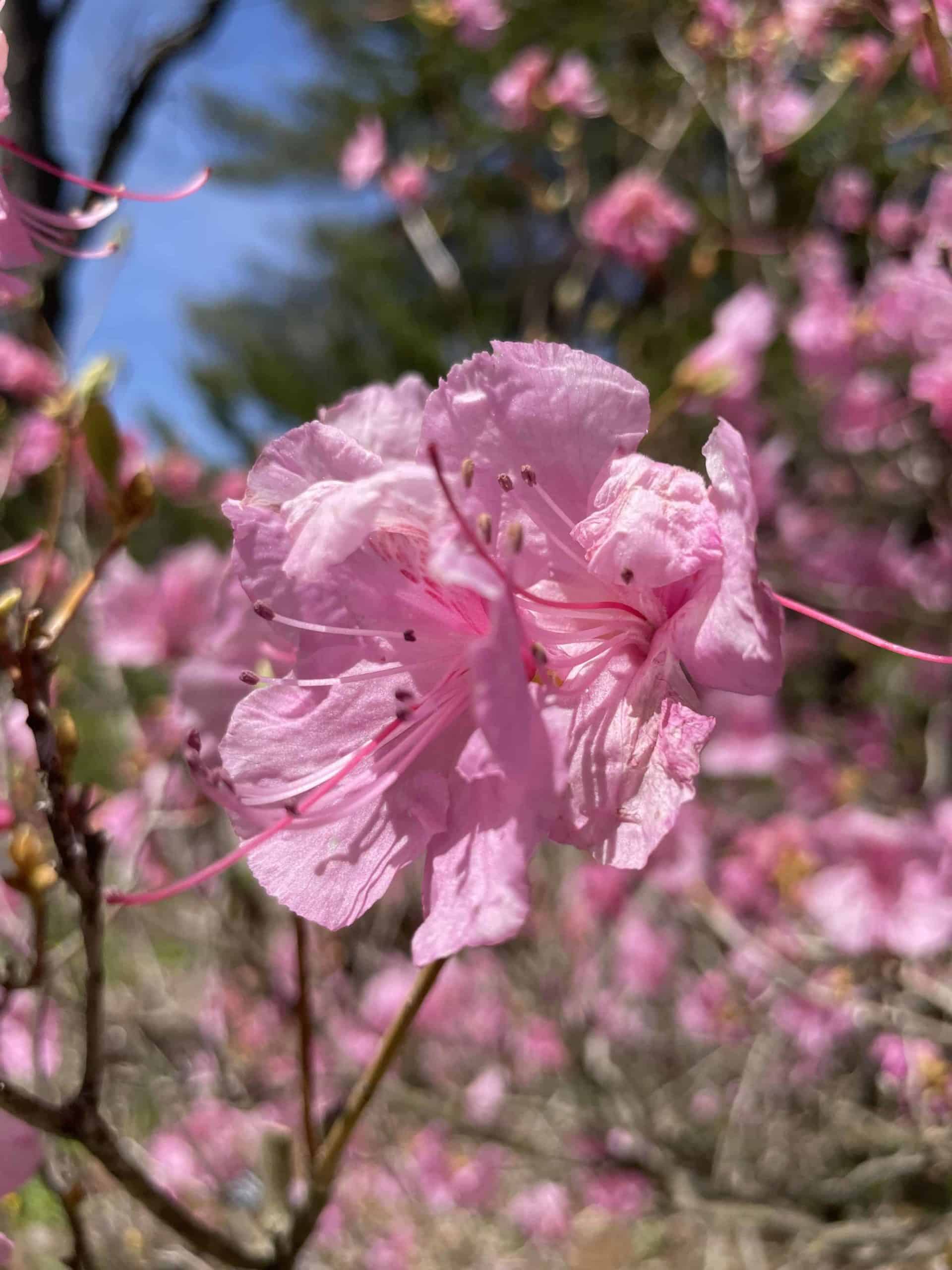
Azaleas are in full blow in Berkshire Botanical Garden in early May.
I have wanted that too. I want to understand more than the names of plants — where they grow vigorously, how they relate to each other, and how they interact with all the living beings around them.
It’s something like getting to know you all in this community, now I think about it. Have a cup of coffee with a colleague … show up for a writing group at the bookstore … walk through a meadow or a farm or a green room and listen to people talk about what they’re making, thinking about, falling in love with… and over time the web grows.
And then one day you look up from the garden and see a red-tailed hawk sail lazily around an updraft and bat another one out of the pine tree, and you start to hope maybe they’ve decided to live here.
“I wanted to know why we love the world,” Kimmerer says, “why the most ordinary scrap of meadow can rock us back on our heels in awe.”
She looks around her feet and sees the wild strawberries and the raindrops on orb webs. And reading on, I think she doesn’t see any scrap of meadow as ordinary. Once you see the shimmer — once you know that dragonflies have irridescent crystal structures in their wings that shift colors in different light, and different butterflies drink from different flowers because the nectaries and stamens fit the lengths of their tongues, and bees can see in ultraviolet — how can any meadow look ordinary again?

